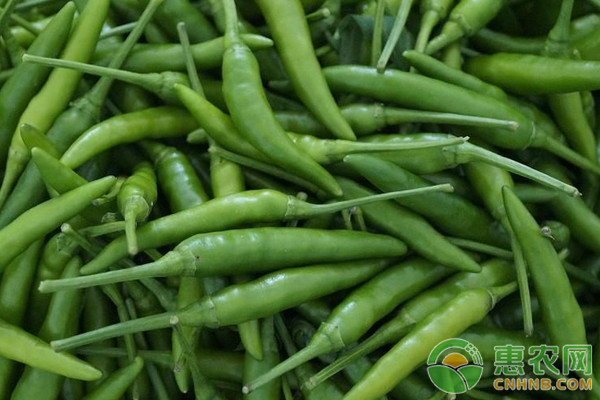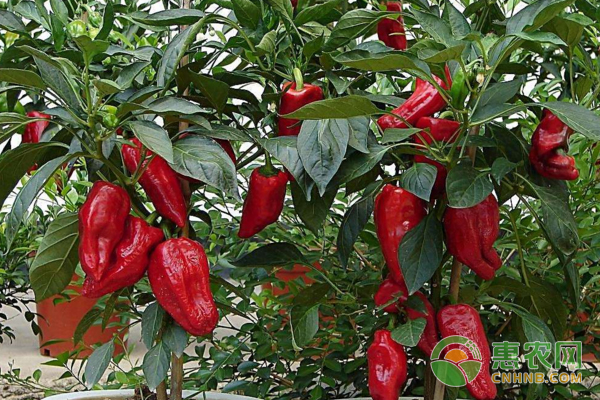Control measures for pests and diseases such as pepper root disease, powdery mildew and tobacco budworm in greenhouse
The cultivation of peppers in greenhouses is conducive to the high yield and quality of peppers, which is one of the ways for farmers to increase their income. However, improper management of peppers grown in greenhouses is prone to some pests and diseases, which affect the yield of peppers. Let's take a look at what pests and diseases are likely to occur in greenhouse cultivation of peppers, and how to prevent them. 1. Greenhouse pepper root disease The root rot of the pepper in the greenhouse can be usually found in the seedling bed or the seedlings after planting. In the early stage of the disease, the surface of the young roots of the seedlings can be rust brown, then gradually rot, and the new roots are not caused, resulting in the yellowing of the stems and leaves, and the plants wilting and dying. Prevention: (1) The pepper seeds should be disinfected before sowing, and then seeded with new high-fat film to avoid underground pests, isolate virus infection and increase seed germination rate. (2) The surface of the kneading surface is leveled. It is strictly forbidden to flood the water. After pouring, it is timely cultivating, and it is sprayed with a new high-fat film to prevent moisture evaporation. At the same time, it should avoid the use of a large amount of fungicides and the like, and increase the incidence of pepper root disease. . (3) Strengthen the temperature management of the seedbed, pay attention to increase the ventilation and reduce the humidity in the shed. In the early stage of pepper root disease, the soil should be drained, the ground temperature should be raised, and the soil permeability should be enhanced. At the same time, a new high-fat film is sprayed to form a protective film to prevent the invasion of airborne pathogens. 2. Greenhouse pepper powdery mildew The symptoms of powdery mildew are: round or near-round white small powder spots on the front and back of the leaves, with more frontal leaves. Later, it gradually expanded and expanded to the surrounding area. In severe cases, the entire blade is covered with a layer of white mold. In the later stages of the disease, sometimes piles of yellow-green to black small particles are produced on the lesions. Prevention: (1) In the selection of pepper varieties, mainly based on improved varieties, not only the environmental adaptability is strong, but also the yield can be improved. In the cultivation of peppers, deep sorghum cultivation is required to improve the soil permeability. The humidity should be maintained in the greenhouse, and the environment in the greenhouse should be adjusted according to the spacing of the pepper plants and the variety. In the way of planting, it is necessary to determine the way of planting according to the characteristics of the pepper and the height of the plant, or the way of pond planting, or the way of triangle splitting, in order to facilitate the better growth of the pepper. (2) Before transplanting in the seedling stage, it is necessary to do a good job in disease prevention and control. Through regular control, it is possible to prevent the bacteria from entering the seedlings and being brought into the field, causing the spread of the disease. The establishment of disease-free fields and disease-free plantlets can improve the disease prevention effect of pepper fields. (3) Do a good job in nursing the peppers. When the pepper enters the flowering stage, the processing of the pepper should be done according to the variety of the pepper and the growth of the plant, such as removing the old leaves and the lower leaves, and removing the foot leaves in time. These leaves are buried deep or burned away from the greenhouse to prevent the bacteria from invading the field. The environmental humidity of the pepper field is related to the density of the field, and powdery mildew is likely to occur. At this point, it is necessary to use the corresponding chemical control. When there is no disease, the disease protection of the field can be carried out using carbendazim, chlorothalonil and the like. When the disease occurs early, the field can be sprayed with azoxystrobin, suspending agent, propiconazole, etc., and the treatment can be performed for about 7 days, and good results can be obtained. When spraying, pay attention to the front and back of the blade to spray, whether it is old leaves, or new leaves should be sprayed evenly. In the choice of the medicine, it is necessary to dispense the medicine according to the actual situation of the field and spray it in place to improve the therapeutic effect of the disease. 3. Methods for controlling tobacco budworm, beet armyworm and cotton bollworm in greenhouse cultivation of pepper Tobacco budworms, beet armyworms and cotton bollworms are common pests in greenhouse cultivation of peppers, which are harmful and will seriously affect agricultural economic benefits. Usually these pests will occur in 2 seasons. When the peppers enter the flowering stage, they are also the high-incidence period of adults. These eggs are usually on the leaves of the flowers. When the larvae hatch, they will cause damage to the fruits of the peppers. At this time, insect nets can be used, and adult insects can be trapped by sexual attractants. In the selection of the medicament, it can be used to make lovage, chlorpyrifos, methyl averaviral salt and the like. After 16:00 every afternoon, spraying the drug on the leaf surface can play a certain role in prevention and treatment. 4. Chemical control method for greenhouse larvae When entering the egg hatching period of Liriomyza sativae, or at the peak of adult larvae, it is necessary to spray chemical agents. The ratio of 1.8% avermectin can be sprayed twice a day, once in the morning, 1 in the evening. Times. This agent has a systemic action and can achieve a good insecticidal effect. It is also possible to use a mixture of 1.8% abadin, 3000 times liquid, spray, and good insecticidal effect. A ratio of 20% of the plaque, a ratio of 50% of the chlorfenapyr, and a ratio of 75% of the chlorfenapyr, each of which is formulated in a scientific manner, is subjected to alternate spray control. 5. Measures to control soil pests and diseases in pepper cultivation in greenhouse Soil pests and diseases mainly include cockroaches, ants, etc., which can cause damage to the roots of pepper seedlings. It is possible to use insecticidal particles of 3000 g for insecticidal action, and the drug can be applied to the surface of the soil. In this way, other conditions such as root rot, blight and various diseases can also be prevented. The peppers in the greenhouse are used for the prevention and control of soil pests and diseases. Usually, 3000g of dikesone is mixed with 50,000g of soil, and then spread on the surface of the soil, which has an early prevention effect. About the small greenhouse planted peppers Xiaobian introduced this. Spring is a period of high disease, and everyone must take preventive measures.
Our super green powder are mainly used as food supplement, health and wellness product additive, you can mix the super greens and Vegetable Powder according to your own formula. Spirulina, chlorella, broccoli powder, kale powder, buckwheat powder, wheatgrass powder, barley grass powder. Those powders are rich in protein, fibers, antioxidant and chlorophyll which can clear free radicals, enhance immunity and providing trace elements people can`t obtain from high carbohydrate diet. Organic super greens powders are Non-GMO, gluten free and vegan friendly, welcome to reach us for more you would like to know.
Super Greens,Buckwheat Grass,Organic Super Greens,Super Greens Powder YT(Xi'an) Biochem Co., Ltd. , https://www.ytlinkherb.com

